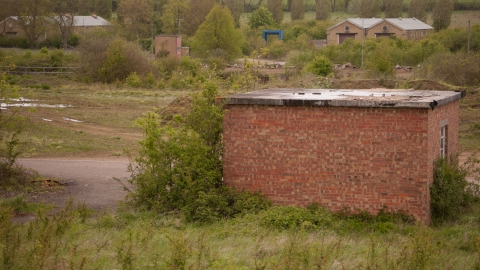
Eden Jackson
Brownfield
What is it?
Previously developed sites are typically referred to as ‘brownfield sites’ which creates a picture of a landscape devoid of nature. Whilst in some cases this may be true often it is far from reality. Instead brownfield sites are typically made up of a mix of bare ground, short grassland, patches of weedy tall herbs, longer flower-rich grassland, scrub and temporary pools. This, combined with a lack of human intervention means that these sites are an essential source of nectar, sheltered warm areas, opportunities for burrowing and good foraging habitat for insects. Other species such as reptiles can also thrive in these habitats due to an abundance of food, basking sites and shelter.
Brownfield habitats are those which have experienced periodic disturbance and abandonment, which combined with low nutrient soils and introduced materials creates the mosaic of early successional habitats. A successional habitat is the first stage in a habitat’s journey towards becoming a forest. The drought-prone and nutrient-poor soils mean that although lush vegetation may develop in places, open bare areas can persist for a long time.
Why is it like this?
Exposed substrate, spoil heaps, broken bricks and concrete create drought-prone and nutrient poor soils – just the thing for species dependent on early successional habitats. Such habitats are increasingly rare elsewhere. The nature of the soil means that, although lush vegetation may develop in places, open bare areas can persist for a long time.
The varied history of brownfield sites means that there is much variation in the pH and chemical composition of the soils. This creates a great deal of variety across the range of the habitat.
Distribution in the UK
The area of brownfield in England is thought to be about 35,000ha; its extent is not known in Scotland, Wales and Northern Ireland. Many of these crucial habitats for invertebrates are found in Kent, in the ‘Thames Gateway’, with over 100 Red Data Book and 400 Nationally scarce species being recorded on brownfield sites on the Thames Estuary!
What to look for
Bees, wasps and hoverflies can all be seen feeding on the nectar and pollen of flowering plants. Rare species such as the shrill carder bee and the distinguished jumping spider now rely on brownfield sites. Slow worm, common lizard, adder and grass snake may all be present and pools can support newts and frogs. Butterflies may include dingy skipper and grayling. Orchids, such as bee orchid and fragrant orchid, can also be found.
Conservation
The increasing pressure on our environment from agriculture and development means that many species that depend on early successional habitats have become rare in the wider landscape. Many of these species now almost totally rely on brownfield habitats.
The importance of brownfield habitats is recognised by their listing as Priority Habitat on Section 41 of the Natural Environment and Rural Communities Act (2006) under the name “Open Mosaic Habitat on Previously Developed Land”. Despite the recognition of the importance of this habitat within the planning system, development continues to pose the greatest threat to brownfield sites. Over half of the important sites in the Thames Gateway have been lost, partially lost or damaged due to development, and those which remain are under threat.
